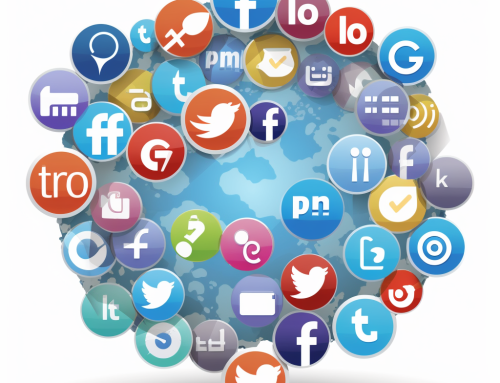
In an era where customer experience is paramount to success, chatbots are evolving rapidly. Explore how voice-enabled chatbots, chatbot automation, and AI-powered chatbots are transforming digital communication as tech gets more human.
Introduction to Chatbot Trends
The landscape of customer service and digital interaction is undergoing a seismic shift, with chatbots at the forefront of this transformation. Chatbots, or conversational agents, have evolved from basic text-based interfaces to complex systems capable of understanding and mimicking human conversation. This transition is fueled by advancements in machine learning, natural language processing, and the ubiquity of messaging platforms.
Initially, chatbots served as automated responders capable of handling simple queries based on pre-defined rules. However, as technology progressed, so did the potential applications of chatbots. Today, they are integral to various industries, providing 24/7 customer support, facilitating transactions, and offering personalized recommendations.
The current trend in chatbot development leans towards creating more human-like interactions. This is achieved through the integration of voice-enabled technologies and artificial intelligence, which allow chatbots to process natural language and learn from user interactions. As a result, chatbots are no longer just tools for efficiency but have become sophisticated digital assistants that enhance the user experience.
One of the most significant chatbot trends is the shift towards voice as a primary mode of interaction. This reflects the growing consumer preference for voice-enabled devices, such as smart speakers and virtual assistants. Voice chatbots offer a more intuitive way for users to engage with technology, making services accessible to a broader audience, including those with visual impairments or literacy challenges.
Another notable trend is the emphasis on automation. By automating routine tasks and conversations, businesses can redirect human resources to more complex and creative work. Chatbot automation not only improves operational efficiency but also ensures consistency in customer interactions, leading to increased satisfaction.
AI-powered chatbots represent the pinnacle of this technological evolution. By harnessing the power of artificial intelligence, chatbots can understand context, manage nuanced conversations, and provide personalized responses. This level of sophistication enables businesses to deploy chatbots for a range of applications, from lead generation to mental health support.
These chatbot trends reflect an overarching movement towards more natural, efficient, and intelligent digital communication. As these technologies continue to mature, we can expect chatbots to become even more ingrained in our daily lives, transforming how we interact with businesses and with each other.
Chatbot Automation
Chatbot automation is a rapidly advancing field within the broader context of digital transformation, redefining the way businesses interact with their customers. At its core, chatbot automation involves programming chatbots to simulate human conversation and execute tasks without human intervention. This trend is driven by the need to optimize customer service operations, reduce response times, and handle a high volume of queries efficiently.
Automation in chatbots is made possible through the integration of sophisticated scripts, machine learning algorithms, and decision-making protocols that guide the conversation flow. These automated systems are capable of recognizing user intent, extracting relevant information, and providing accurate responses to a wide range of inquiries.
One of the key components of chatbot automation is the ability to integrate with existing business systems and databases. This allows chatbots to pull information from various sources to answer customer queries, process orders, and even provide personalized recommendations. For example, an e-commerce chatbot can automate the entire purchasing process, from product selection to payment and shipping confirmation.
Furthermore, chatbot automation extends to the realm of customer relationship management (CRM) by tracking interactions, analyzing customer feedback, and updating customer profiles. This data-driven approach enables businesses to tailor their services to individual needs and preferences, fostering stronger customer relationships.
The impact of chatbot automation on customer service is profound. By handling routine inquiries and tasks, chatbots free up human agents to focus on more complex issues that require empathy and nuanced judgment. This division of labor not only boosts efficiency but also improves the overall quality of customer support.
Despite the advantages, chatbot automation also presents challenges. Ensuring that chatbots can handle a diverse set of scenarios without human oversight requires careful design and regular updates. Moreover, maintaining a balance between automation and human touch is crucial to avoid depersonalization of customer service.
In conclusion, chatbot automation is reshaping the customer service landscape by providing fast, consistent, and personalized interactions. As technology advances, we can anticipate even more sophisticated automation capabilities, further blurring the lines between human and machine-led customer service.
Voice-Enabled Chatbots
Voice-enabled chatbots are a cutting-edge technology that allows users to interact with chatbots through spoken language, rather than traditional text-based communication. This innovation leverages advancements in natural language processing (NLP) and speech recognition technology to enable more seamless and intuitive conversations between users and chatbots.
One of the key advantages of voice-enabled chatbots is the convenience they offer. Users can engage with chatbots hands-free, making it easier to multitask or access information on-the-go. This hands-free interaction is particularly valuable in scenarios where users may not have the ability to type, such as when driving or cooking.
Voice-enabled chatbots also enhance accessibility for users with disabilities or those who may have difficulty typing. By enabling users to interact with chatbots through voice commands, businesses can ensure that their services are inclusive and cater to a wider range of individuals.
Furthermore, voice-enabled chatbots provide a more natural and conversational experience for users. This human-like interaction can lead to higher levels of engagement and satisfaction, as users feel more connected to the chatbot and the brand it represents. By mimicking real conversations, voice-enabled chatbots can also help build stronger relationships with customers and enhance brand loyalty.
In addition, voice-enabled chatbots can be integrated with other voice-activated devices and platforms, such as smart speakers and virtual assistants, expanding their reach and potential impact. This integration allows users to access chatbot services through various channels, providing a seamless and consistent experience across different touchpoints.
Overall, voice-enabled chatbots represent a significant advancement in chatbot technology, offering businesses a powerful tool to engage with customers in a more personalized, convenient, and engaging manner. By leveraging voice technology, businesses can enhance customer experiences, drive brand loyalty, and stay ahead of the curve in the competitive landscape of chatbot marketing.
AI-Powered Chatbots
AI-powered chatbots represent the cutting-edge in the evolution of conversational agents, utilizing artificial intelligence to provide an unparalleled level of interaction and service. These chatbots are equipped with advanced machine learning models and natural language processing (NLP) capabilities, allowing them to understand, interpret, and respond to human language with a high degree of accuracy.
The core of an AI-powered chatbot’s functionality lies in its ability to learn from interactions. Through continual exposure to conversation data, these chatbots refine their understanding of language nuances, user intent, and context. This self-improvement mechanism is crucial for handling complex and varied dialogue, enabling chatbots to provide more relevant and contextually appropriate responses over time.
Natural language processing is a fundamental technology behind AI chatbots. NLP algorithms analyze text inputs, break down language into understandable components, and extract meaning from user queries. This allows chatbots to engage in conversations that feel natural and intuitive to the user, rather than rigid and scripted.
Another significant aspect of AI-powered chatbots is their capacity for personalization. By analyzing user data and past interactions, AI chatbots can tailor their responses to individual preferences, creating a more personalized experience for each user. This level of customization can enhance customer satisfaction and loyalty, as users feel understood and valued.
AI chatbots can also integrate with various data sources and third-party applications, enabling them to perform a wide range of tasks, from scheduling appointments to providing real-time support for complex technical issues. This versatility makes them valuable assets across multiple sectors, including healthcare, finance, retail, and customer service.
The implementation of AI in chatbots does come with challenges, such as ensuring privacy and security of user data, overcoming language barriers, and managing user expectations. However, the benefits of AI-powered chatbots, such as their ability to provide 24/7 service, handle large volumes of queries, and reduce operational costs, make them a compelling solution for businesses looking to enhance their customer engagement strategies.
What’s the answer? AI-powered chatbots are transforming the way we interact with digital services, providing smarter, more responsive, and personalized communication. As AI technology continues to advance, these chatbots will become even more sophisticated, further revolutionizing the customer service domain.
The Future of Chatbots
The future of chatbots is poised to be a synthesis of technological prowess and human-like engagement. As advancements in artificial intelligence, machine learning, and natural language processing continue to accelerate, chatbots are expected to become more sophisticated and integral to our digital interactions.
In the near future, chatbots are likely to exhibit enhanced cognitive abilities, such as understanding complex user emotions and responding empathetically. This will not only improve the user experience but also enable chatbots to handle sensitive topics with the finesse of a human agent. With these capabilities, AI-powered chatbots could revolutionize areas such as mental health support, where they can provide immediate assistance and guidance.
Another anticipated development is the seamless integration of chatbots across various platforms and devices. As the Internet of Things (IoT) expands, chatbots could serve as the central interface for managing a network of connected devices, offering users a unified experience across their digital ecosystem.
Furthermore, the growing trend of hyper-personalization will see chatbots becoming more adept at delivering customized content and solutions to users. By leveraging vast amounts of data and sophisticated analytics, chatbots will be able to anticipate user needs and preferences, offering proactive assistance and recommendations.
The proliferation of chatbots is also expected to reshape the workforce, as they take on more repetitive and administrative tasks. This shift will necessitate a reevaluation of job roles and the development of new skills focused on managing and enhancing the capabilities of AI systems.
However, the advancements in chatbot technology will not be without challenges. Ethical considerations around privacy, consent, and data security will become increasingly important as chatbots handle more sensitive information. Additionally, there will be a need to maintain a human touch in customer service, ensuring that the efficiency of chatbots does not compromise the quality of human interaction.
At Sikhara we believe the future of chatbots is a horizon brimming with potential. As they grow more intelligent, conversational, and personalized, chatbots will redefine the boundaries of customer service, accessibility, and user engagement. The key to unlocking this potential lies in the responsible and innovative application of AI technologies, with a focus on enhancing the human experience. Contact us today or visit our Marcom Chatbot at: https://www.sikharamarketing.com/marcom-chatbot/




